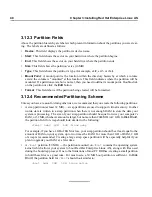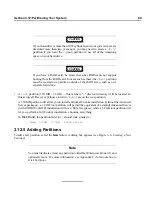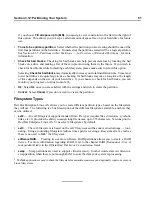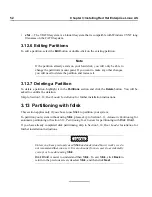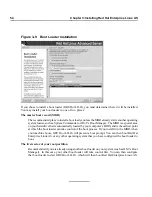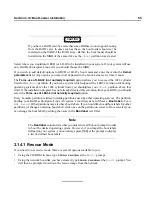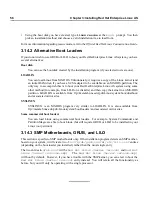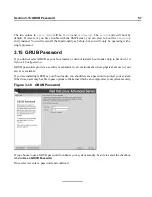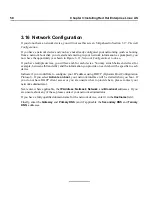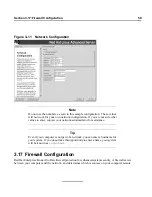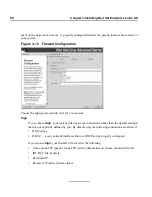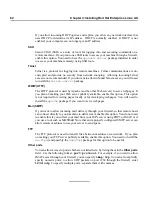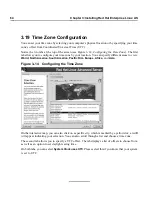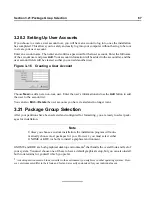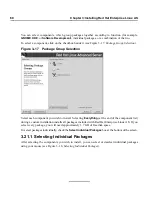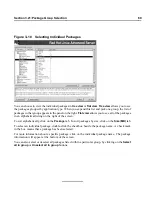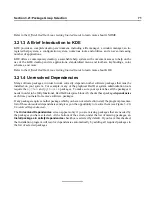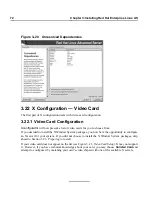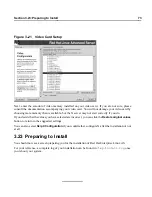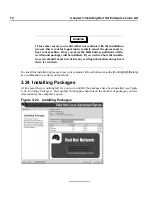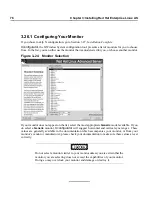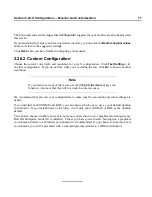
62
Chapter 3:Installing Red Hat Enterprise Linux AS
If you allow incoming DHCP queries and replies, you allow any network interface that
uses DHCP to determine its IP address. DHCP is normally enabled. If DHCP is not
enabled, your computer can no longer get an IP address.
SSH
Secure SHell (SSH) is a suite of tools for logging into and executing commands on a
remote machine. If you plan to use SSH tools to access your machine through a firewall,
enable this option. You need to have the
openssh-server
package installed in order
to access your machine remotely, using SSH tools.
Telnet
Telnet is a protocol for logging into remote machines. Telnet communications are un-
encrypted and provide no security from network snooping. Allowing incoming Telnet
access is not recommended. If you do want to allow inbound Telnet access, you will need
to install the
telnet-server
package.
WWW (HTTP)
The HTTP protocol is used by Apache (and by other Web servers) to serve webpages. If
you plan on making your Web server publicly available, enable this option. This option
is not required for viewing pages locally or for developing webpages. You will need to
install the
apache
package if you want to serve webpages.
Mail (SMTP)
If you want to allow incoming mail delivery through your firewall, so that remote hosts
can connect directly to your machine to deliver mail, enable this option. You do not need
to enable this if you collect your mail from your ISP’s server using POP3 or IMAP, or if
you use a tool such as
fetchmail
. Note that an improperly configured SMTP server can
allow remote machines to use your server to send spam.
FTP
The FTP protocol is used to transfer files between machines on a network. If you plan
on making your FTP server publicly available, enable this option. You need to install the
wu-ftpd
(and possibly the
anonftp
) package for this option to be useful.
Other ports
You can allow access to ports which are not listed here, by listing them in the
Other ports
field. Use the following format:
port:protocol
. For example, if you want to allow
IMAP access through your firewall, you can specify
imap:tcp
. You can also explicitly
specify numeric ports; to allow UDP packets on port 1234 through the firewall, enter
1234:udp
. To specify multiple ports, separate them with commas.
Содержание ENTERPRISE LINUX AS 2.1 -
Страница 1: ...Red Hat Enterprise Linux AS 2 1 The Official Red Hat Enterprise Linux AS Installation Guide ...
Страница 8: ...viii ...
Страница 14: ...xiv Introduction ...
Страница 15: ...Part I Installing Red Hat Enterprise Linux AS ...
Страница 16: ......
Страница 26: ...26 Chapter 1 Steps to Get You Started ...
Страница 30: ...30 Chapter 2 System Requirements Table ...
Страница 80: ...80 Chapter 3 Installing Red Hat Enterprise Linux AS ...
Страница 94: ...94 Chapter 4 Installing Red Hat Enterprise Linux AS via Text Mode ...
Страница 95: ...Part II Configuring Red Hat Enterprise Linux AS ...
Страница 96: ......
Страница 100: ...100 Chapter 5 Introduction ...
Страница 114: ...114 Chapter 6 Linux Virtual Server Overview ...
Страница 153: ...Part III Appendixes ...
Страница 154: ......
Страница 156: ...156 Appendix A Additional Resources for LVS Clustering ...
Страница 160: ...160 Appendix B A Sample etc sysconfig ha lvs cf File ...
Страница 162: ...162 Appendix C Removing Red Hat Linux ...
Страница 168: ...168 Appendix D Getting Technical Support ...
Страница 178: ...178 Appendix E Troubleshooting Your Installation of Red Hat Enterprise Linux AS ...

